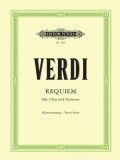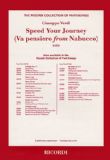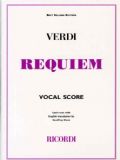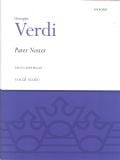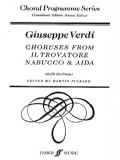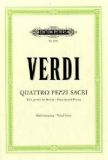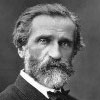
Giuseppe Verdi
The unchallenged master of Italian opera during the Romantic era, Verdi created some of the most popular operas in the repertoire. Yet his mastery of drama and lyricism was hard won across an output of over 30 operas.
He grew up in a family of small landowners and taverners and battled to pursue a music career, being turned down for a place at the Conservatoire in Milan. He was appointed town musician in Busseto, supported by a local merchant whose daughter he married in 1836. By 1840 his two infant daughters and wife were dead, instilling a strong sense of tragedy to his life and music. He won fame with his third opera Nabucco in 1842, and spent the next decade learning his trade as opera composer during his ‘galley slave’ years. These culminated in three works showing his advances beyond the set forms of his models Rossini and Donizetti: Rigoletto, Il Trovatore and La Traviata.
In the late 1850s and 1860s Verdi’s works attracted attention internationally, with first performances of The Sicilian Vespers and Don Carlos in Paris, and The Force of Destiny in St Petersburg. Aida was commissioned for the opening of the Suez Canal and was given its first performance at the Cairo Opera House in 1871. Verdi was engaged politically, supporting the Risorgimento movement’s call for Italian unification, and was elected to the national parliament and appointed a senator.
Works of his later years include the Requiem and two masterly settings of Shakespeare, Otello and Falstaff. His melodic gifts drew an enormous public following in his own lifetime and since. His funeral procession drew a crowd of 28,000 onto the streets of Milan, and popular tunes such as the aria La donna è mobile are known worldwide.
Bestselling Titles by Giuseppe Verdi
-
Publisher: Peters EditionIn Stock: Usually despatched within 24-48 hours$17.72
-
Publisher: RicordiUsually despatched within 7-10 working days - Lead times may vary in the case of supplier shortages or delays$6.67
-
Publisher: RicordiUsually despatched within 7-10 working days - Lead times may vary in the case of supplier shortages or delays$20.70
-
Publisher: Oxford University PressUsually despatched within 7-10 working days - Lead times may vary in the case of supplier shortages or delays$12.38
-
Publisher: Faber MusicUsually despatched within 7-10 working days - Lead times may vary in the case of supplier shortages or delays$6.34
-
Publisher: Peters EditionOut Of Print / Not Available / Discontinued$5.02



